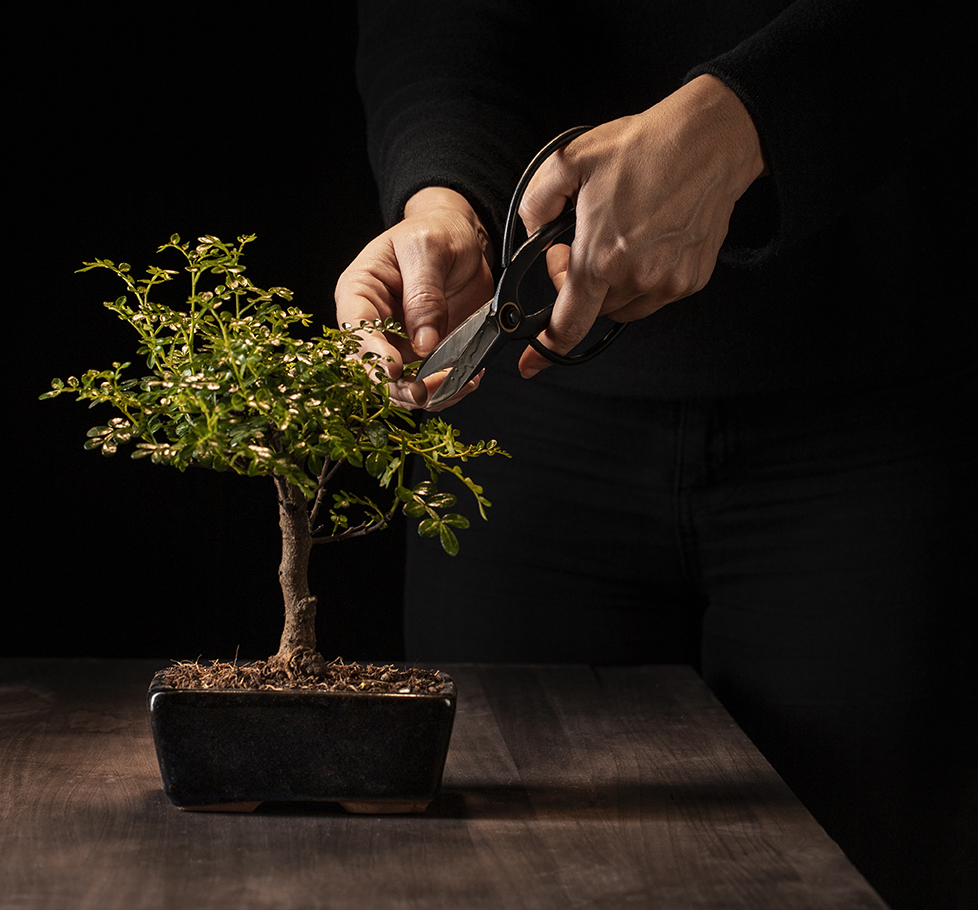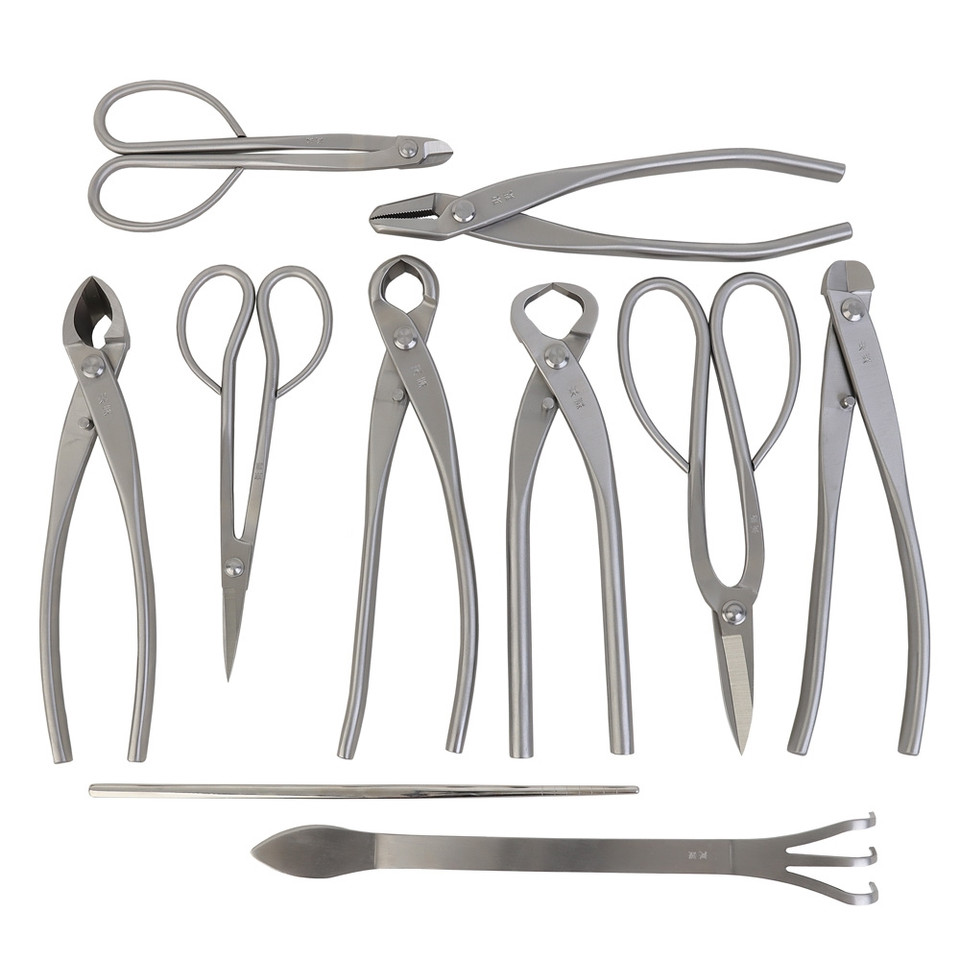
New to Bonsai and don’t know how to start your journey? please read on
Lets start by answering the question, what exactly is Bonsai?
Bonsai simply means a tree in a pot, traditionally imitating larger trees in nature. The actuality is that it is an artform inspired by nature, fusing modern and traditional techniques, many that are thousands of years old.
The crucial basics..
Plants: Any plant with a permanent wood-like structure can be used for bonsai, including trees, shrubs and vines etc
Growing: Bonsai trees are grown from seeds or cuttings
Pruning: Pruning is performed during the dormant period to preserve the tree’s health and growth.
Fertilizing: Fertilize regularly during the growing season, using smaller quantities than normal plants.
Aesthetics: Traditionally the trunk should taper from base to top, and the branches should be smaller closer to the top. The foliage should be in proportion to the trunk and branches.
Bonsai styles: There are different styles of bonsai, including formal upright, informal upright, slanting, windswept to name but a few, however as like most artforms it is completely up to you.

Pots: Are just as important as the tree itself to aid with the overall aesthetics and the health of the tree.

Where to purchase trees?
- Garden centres and specialist shops all potted and ready to go
- Bushes, shrubs and trees from garden centres that can be shaped and pruned
- With permission extracted from hedgerows and woods etc
- Private sellers

Bonsai Tools
Although there are specialist Bonsai tools as a beginner all you need are a clean pair of sharp garden scissors, a pair of pruning shears or secateurs, a pair of pliers and wire cutters. As you grow your collection you can easily replace these tools with the specialist tools.




Brief list of Bonsai words
A
Adventitious Bud – A growth bud that is produced in an unexpected place
Air Layering – A technique used to encourage a tree or branch to form new roots at a desired point
Akadama – A fine free draining gravel soil for growing Bonsai trees
Apex – The highest point or top of a tree
Apical – The most vigorous growth produced by a tree, usually at the upper and outermost branches
B
Back Budding – A technique to encourage bud growth further back along the branch or trunk by pruning the apical growth
Banyan – A tree style with exposed roots that grow from branches and trunk and reaching down to the soil
Bleed – The process of a tree weeping sap through a wound or cut
Bonkei – The Japanese Term for a tray landscape encompassing rocks, small accent plants and trees
Botanical Name – The Latin name given to a plant or tree
Branches – Branches are the growth on a tree and usually grow out from the trunk, see Primary branches, Secondary branches and Tertiary branches
Broad Leaved – Broad leaved trees belong to the group of flowering plants or Angiosperms and are also know as deciduous trees which lose their leaves in Autumn and enter dormancy until the following Spring
Bud – A shoot containing an embryonic leaf, flower or branch
Bud Break – The point at which the bud has just about opened enough to show a green tip
Bud Burst – The point at which a bud unfurls to show new leaf growth
Bud Extension – The point when buds formed the previous year begin to swell and extend prior to bud break
Bunjingi – The Chinese term for the literati form
Buttressing – Known as root flare or nebari, the base of the tree flares outwards giving a solid stance and an impression of great age
C
Callus – The tissue that forms over a wound on a tree as part of the healing process
Cambium – The layer of green growth tissue directly below the bark
Candle – The extending bud of a Pine tree prior to the new needles opening
Chlorosis – Loss of chlorophyll in the leaves resulting from a mineral deficiency
Chokkan – The Japanese Term for a bonsai tree with a formal upright form
Chop – Heavy pruning and / or height reduction of the tree trunk
Common Name – The name by which a plant is commonly known and can differ from country to country
Coniferous – Conifers belong to the group of plants known as Gymnosperms and are characterised by their needle or scale like foliage which in the main is retained all year round
Cultivar – A cultivated variety of a given species, i.e. Acer Palmatum ‘Deshojo’
D
Deadwood – A technique used to create deadwood on a Bonsai, thereby giving an aged or characterful appearance
Deciduous – Predominantly broad leaved trees which shed their leaves in the Autumn followed by dormancy during the Winter
Defoliation – A technique employed to reduce leaf size and the distance between internodes by removing all or most of a trees leaves
Die Back – A process of foliage dying usually beginning at the growing tips as a result of disease or injury
Dissected – A term applied to leaves that are deeply cut into segments or lobes
E
Ericaceous – A term applied to a group of plants which prefer acidic soil conditions
Evergreen – A term given to plants that are in leaf all year round, only shedding old leaves which are replaced by new growth
F
Form – A form describes the main direction in which the trunk of a tree is grown
Fukinagashi – The Japanese Term for a windswept form
G
Genus – A group of plants that belong to the same family and share the first part of a plant’s Latin name, i.e. Acer
Graft – A technique used to splice or attach a growing shoot or branch to a tree
H
Han Kengai – The Japanese Term for a semi cascade form
Hoki Dachi – The Japanese Term for a broom form
I
Ikadabuki – The Japanese Term for a raft form
Indoor Bonsai – A tree species originating from a tropical or subtropical region that needs to be grown inside in temperate climates but may be placed outside during summer months
Internode – The section of growth between two leaf joints, known as nodes
Ishisuki – The Japanese Term for a rock planting
J
Jin – The process of removing or peeling of bark on a branch to create deadwood
K
Kabudachi – The Japanese Term for a multiple trunk tree
Kengai – The Japanese Term for a cascade form
L
Literati – The Japanese Term for a bonsai tree form having a tall, slim trunk, and sparse foliage confined to the top of the tree
M
Mame – A classification name given to Bonsai trees typically less than 10 cm in height
Moyogi – The Japanese Term for a bonsai tree with an informal upright form
N
Nebari – The Japanese Term for root flare or a bonsai tree with an exposed root form
Netsunagari – The Japanese term for a bonsai which is root connected
Node – The growth point from which leaves, leaf buds and shoots can appear on a branch or trunk
O
Over Watering – The result of watering too frequently and often combined with poor draining soil that can result in root rot and the death of a tree
P
Peat – An organic soil component which is derived from rotted and broken down Sphagnum Moss
Pen Jing – A Chinese landscape planting
Petiole – The stalk of a leaf that attaches it to the stem or branch
Phoenix Graft – A technique where a young sapling is attached to deadwood to mimic an aged bonsai tree
Potensai – A term for tree material with potential for becoming a bonsai
Pre Bonsai – A term applied to a young tree that has not yet been trained as a bonsai
Primary Branches – Branches growing directly from the trunk
Pruning – The method of training a Bonsai by trimming leaves and/or branches
R
Ramification – The repeated division of branches by means of pruning
Rock Planting – A term given to trees that have been planted on or in rocks to create a dramatic visual appearance
Root Flare – The exposed surface roots at the base of the trunk also known as the Nebari
Root Over Rock – A highly visual method of planting a tree over a rock with the exposed roots extending downwards to reach the soil
S
Sabamiki – The Japanese Term for a split trunk
Sai Kei – The Japanese Term for a landscape planting
Sankan – The Japanese Term for a triple trunk bonsai form
Seasonal Bonsai – A species that are at their best for only a short time, i.e. when in flower or fruit
Secondary Branches – Branches growing directly from the Primary branches
Sekjoju – The Japanese Term for a root over rock bonsai
Shakkan – The Japanese Term for a slanting form bonsai
Shari – A technique used to create deadwood on the trunk
Sharimiki – The Japanese Term for driftwood
Shidare Zukuri – The Japanese Term for a weeping form bonsai
Shohin – The classification name given to Bonsai trees typically less than 20cm in height
Soil – In terms of growing bonsai, the soil can be either organic or inorganic and may consist of a mixture of peat, bark or leaf litter, stone, mineral or fired clay such as grit, sand or Akadama
Sokan – The Japanese Term for a twin trunk style bonsai
Species – The sub division of a Genus that provided the second name in the Latin terminology, i.e. Acer Palmatum
Style – The overall way in which a Bonsai is shaped to aesthetically compliment the direction of the trunk
Substrate – The name given to the material that the bonsai grows in, i.e. soil
Suiban – A shallow water tray for displaying rock plantings
T
Tanuki – The Japanese Term for Phoenix Graft, where a sapling is attached to deadwood
Terminal – The term given to the apical or outermost tip of a bonsai
Terminal Bud – The bud formed at the outermost tip of a stem, twig or branch
Tertiary Branches – Branches growing directly from the Secondary branches
Tokonoma – A display area in a traditional Japanese home
Toriki – The Japanese Term propagation technique also referred to as air layering
Trunk Leader – A technique applied to train an uppermost branch to grow as an extension of the trunk, usually after the top of the trun k is removed.
Tsugiki – The Japanese term for a graft
U
Under Watering – The act of not providing sufficient water for a bonsai to remain in a healthy state
Uro – The Japanese term for the hollow parts of the trunk remaining after the wood has rotted away
V
Variety – The third name in Latin terminology of sub division of species, i.e. Acer palmatum Deshojo
W
Wiring – A technique of wrapping a branch or trunk in wire and bending that branch or trunk with the aim of getting it to grow in that way
X
Xylem – The area below the cambium layer in a branch or trunk
Y
Yamadori – Bonsai material collected from the wild
Yose Ue – The Japanese term for a forest planting
